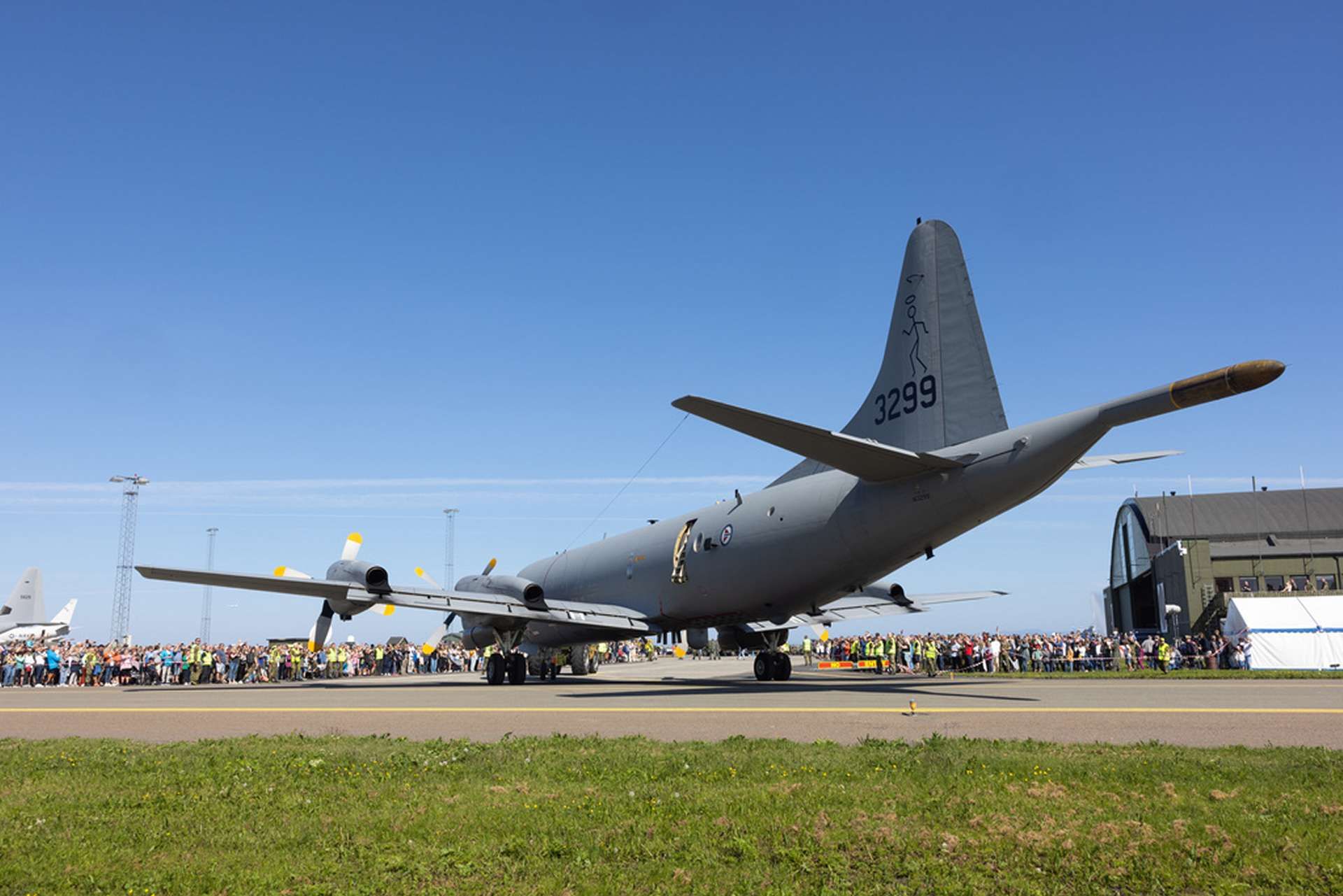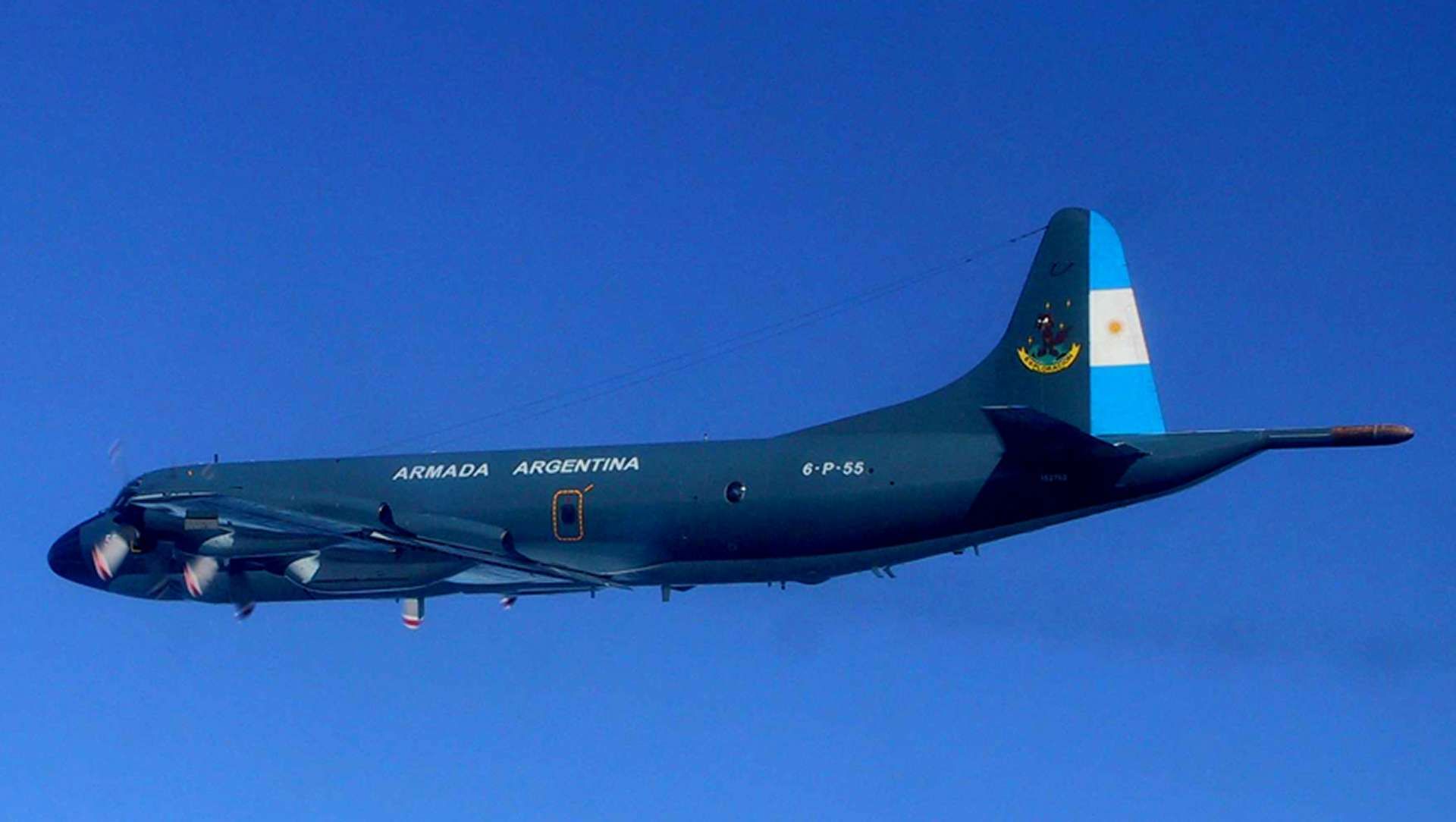Breaking News
Argentina receives first P-3C Orion anti-submarine aircraft from Norway.
On September 2, 2024, the first of four P-3 Orion aircraft acquired by the Argentine Navy from Norway arrived at the Almirante Zar Naval Air Base in Trelew, Chubut Province. The aircraft, initially registered as 163299, underwent maintenance and upgrades in the United States before being transferred to Argentina. It will be re-registered as 6-P-57 and assigned to the Naval Exploration Squadron of the 3rd Naval Force, based in Trelew.
Follow Army Recognition on Google News at this link

This ex-Norwegian P-3C Orion, initially registered as 163299, will be re-registered as 6-P-57 and assigned to the Naval Exploration Squadron of the 3rd Naval Force, based in Trelew. (Picture source: Argentine MoD)
The acquisition of these four aircraft (three P-3C models and one P-3N) was conducted through the National Public Investment Project. The objective of this procurement is to enhance the operational and logistical capabilities of the Naval Aviation Command's search and exploration fleet. The new aircraft will support the Navy's responsibilities under Law No. 22,445, which include fulfilling international obligations related to search and rescue operations across a maritime zone of 16.2 million square kilometers. The aircraft will also aid in safeguarding Argentina’s sovereign rights within the Exclusive Economic Zone (EEZ) and other national maritime and river spaces, including regions such as Argentine Antarctica.
A reception ceremony for the aircraft is scheduled to take place in mid-September at the Aeroparque Military Air Base in Buenos Aires. The event is expected to be led by the Minister of Defense, Dr. Luis Alfonzo Petri, with the participation of the Chief of the General Staff of the Navy, Vice Admiral Carlos María Allievi. Other officials, including the Ambassadors of Norway and the United States in Argentina, Norwegian ministerial representatives, and the Chief of the Joint Chiefs of Staff of the Armed Forces, are also set to attend.
These P-3C Orions were formerly part of the Royal Norwegian Air Force, which has replaced them with Boeing P-8A Poseidon maritime patrol and reconnaissance aircraft. The acquisition agreement between Argentina and Norway was signed in October 2023, but the delivery was delayed due to payment issues and logistical challenges involving the aircraft's equipment. Further negotiations were required with both Norwegian and U.S. authorities to ensure that the aircraft would be delivered with fully operational systems. The P-3C Orions come equipped with systems such as the Raytheon AN/APS-137 radar, AN/AAR-47 infrared sensor, and AN/ASQ-81 Magnetic Anomaly Detector, which are important for their designated roles.

These three P-3C Orions were formerly part of the Royal Norwegian Air Force, which has replaced them with Boeing P-8A Poseidon maritime patrol and reconnaissance aircraft. (Picture source: Norwegian MoD)
As part of a service life extension program (ASLEP), all four aircraft underwent a complete replacement of their wings, extending their operational lifespan to an average of 17,000 flight hours per aircraft, which corresponds to at least 15 years of service. The acquisition also includes accessories, spare parts, test benches, and other components necessary for ongoing maintenance and operation.
The addition of the P-3C Orions is intended to modernize the Argentine Navy's fleet by replacing the older P-3B variant, which is no longer operational. The new aircraft are expected to bridge the capability gap left by the aging fleet. In addition to the three P-3C models, which are designed for maritime surveillance and anti-submarine warfare, Argentina has also acquired a P-3N model for search and rescue operations.
The procurement process encountered challenges, particularly delays in payment that impacted the delivery timeline. This situation has raised concerns about potential complications for other defense acquisitions, such as the planned purchase of 24 F-16 fighters from Denmark. The Argentine Air Force, which has not operated supersonic fighters for nine years, currently relies on Lockheed Martin A-4AR Fightinghawk subsonic jets for air defense. The integration of the F-16 fighters is expected to involve additional complexities, including new infrastructure requirements, pilot training, and maintenance support.

As part of a service life extension program (ASLEP), all four aircraft underwent a complete replacement of their wings, extending their operational lifespan to an average of 17,000 flight hours per aircraft, which corresponds to at least 15 years of service. (Picture source: Norwegian MoD)
The P-3C Orions were prepared for service at MHD-Rockland facilities in Florida, where sensor upgrades were performed. The Raytheon AN/APS-137(V)5 radar, a key element of these upgrades, provides multimode detection and navigation capabilities, including synthetic aperture radar (SAR) and inverse synthetic aperture radar (ISAR) modes, which are useful for identifying and tracking both land and maritime targets. This radar represents a technical improvement over the older Texas Instruments AN/APS-80 radar used in the P-3B variant.
Defense Minister Luis Petri recently emphasized the need to resolve equipment and payment issues to ensure the aircraft's operational readiness. Navy Chief Admiral Carlos Allievi confirmed that the aircraft were undergoing maintenance in Tucson, Arizona, with final preparations being completed in Florida. He stated that the first P-3C was expected to arrive in September and that the fleet consists of three Charlie models and one November model, each designated for specific operational roles.
Upon its arrival, the P-3C Orion will be integrated into the Naval Aviation Exploration Squadron at the Almirante Zar Naval Air Base, which has experienced diminished capabilities due to the aging P-3B fleet. An official ceremony is planned to formally incorporate the aircraft into the Navy's operational structure.

Upon its arrival, the P-3C Orion will be integrated into the Naval Aviation Exploration Squadron at the Almirante Zar Naval Air Base, which has experienced diminished capabilities due to the aging P-3B fleet. (Picture source: Argentina MoD)
The acquisition of the P-3C Orions is funded by the Argentine National Defense Fund (FONDEF). Argentine naval pilots are currently training in the United States to operate these aircraft, which will be utilized for various missions, including maritime surveillance, anti-submarine warfare, anti-surface missions, and search and rescue operations. This purchase forms part of Argentina's broader strategy to reinforce its defense and surveillance capabilities over its maritime territories.
The P-3 Orion, developed by Lockheed in the 1960s, is a turboprop aircraft used in anti-submarine warfare, search and rescue, and maritime surveillance roles. It is equipped with sensors such as the Magnetic Anomaly Detector (MAD) and can carry various types of armaments, including sonobuoys, torpedoes, and missiles. The aircraft has undergone numerous upgrades, particularly in its electronic systems, and continues to be operated by several navies worldwide. Since its introduction, 757 P-3 Orions have been built, and it remains in service over 50 years after its initial deployment.
Negotiations for the acquisition began in March 2022, involving officials from both Argentina and Norway, including Hector Mazzei of the Argentine Ministry of Defense and Magnus Hansvold from the Norwegian Defense Materiel Agency (NDMA). The new P-3 Orions will be based with the Argentine Navy's surveillance squadron at Almirante Zar Naval Air Base in Trelew. This purchase aligns with Argentina's prior experience with the P-3 Orion, as the country previously operated six P-3B aircraft acquired from the U.S. Navy between 1997 and 1999, two of which were used for spare parts.

Since its introduction in the 1960s, 757 P-3 Orions have been built, and it remains in service over 50 years after its initial deployment. (Picture source: Norwegian MoD)
The P-3C Orions come with advanced sensors and radar systems that enhance their operational roles. The aircraft's Magnetic Anomaly Detector, located in the tail, plays a role in detecting submarines by sensing disturbances in the Earth's magnetic field. While this technology requires low-altitude operation and has a limited range, it is essential for locating submarines accurately.
The P-3 Orion has undergone several modifications over the years, particularly to its electronics. It remains a primary asset for maritime patrol, reconnaissance, anti-surface warfare, and anti-submarine warfare for several naval forces globally. Since 2012, the aircraft has joined a select group of military platforms, such as the Boeing B-52 Stratofortress, Boeing KC-135 Stratotanker, Lockheed C-130 Hercules, and Lockheed U-2, which have been in use by the U.S. military for over five decades. Recently, the P-3 Orion has started to be supplemented by the newer Boeing P-8 Poseidon, a turbofan-powered aircraft that will eventually replace the P-3s in U.S. Navy service.


























